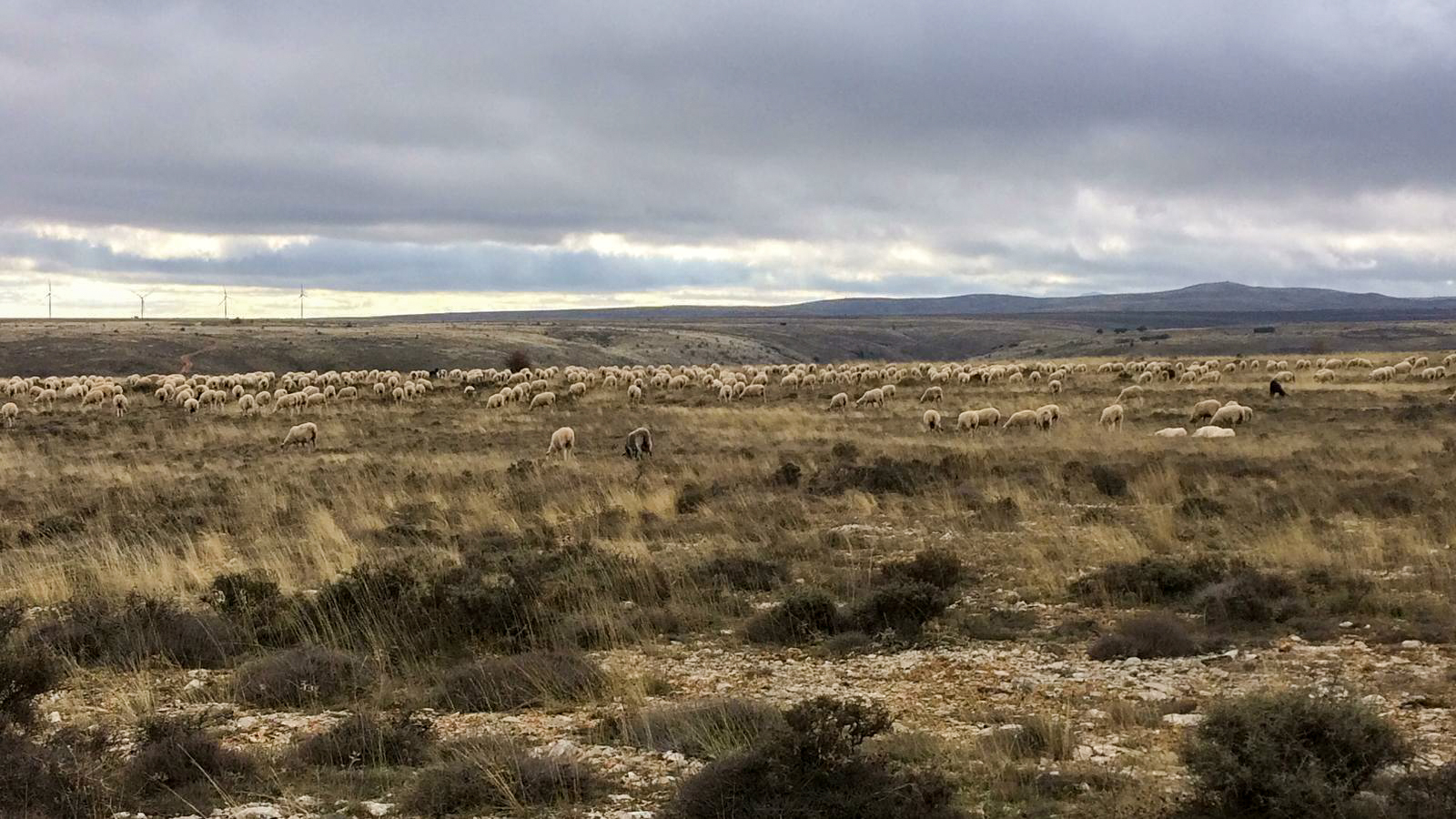Food availability during winter, key driver in the intensity of space use by the Dupont’s lark
Plant structure and food availability are key factors to understand the use of space by organisms during the breeding season, and of course Dupont’s lark is not an exception. However, the relation between space use and food availability outside the breeding season is less known, despite this period can be critical for the maintenance of populations, especially for resident species in areas where climate and food can be limited during the winter.
Thus, the TEG-UAM team has evaluated the importance of food availability during the non-breeding season on the space use and on the territory selection of Dupont’s lark in spring. During the autumn of 2015 and the winter of 2016 we sampled the biomass of arthropods, the microstructure and vegetation composition, and grazing pressure in 35 different points in “Tierra de Medinaceli” region (Soria). In addition, during the spring of 2016 we censused and mapped the breeding territories of the Dupont´s lark in the same areas, which allowed us to relate those variables to the space use of the species.
Firstly, our results shown that food availability for the Dupont’s lark is related to vegetation structure. Biomass of epigeous arthropods was higher in areas where the cover of Genista pumila shrub was high, which indicates that the selection of these shrubs by the species could be due not only because vegetation structure is adequate, but also because food availability around this shrub species is higher.
On the other hand, the space use and the location of territories of Dupont’s lark during the breeding season was greater in those areas with a higher intensity of grazing. These results match with recent studies that highlight the importance of extensive grazing, which acts as an agent modelling the vegetation and moving nutrients,. Thus may provoke a trophic effects cascade that increases the availability of coprophagous arthropods, Dupont’s lark potential food. Moreover, the biomass of coprophagous arthropods during winter partially explained the intensity of space use in spring; larger numbers of Dupont’s lark territories were found in areas with a greater coprophagous biomass during the winter.
This work highlights that at microhabitat scale and at least during the non-breeding season, grazing pressure increases the biomass of coprophagous arthropods, which is related to a greater presence of Dupont’s lark during the breeding season (Fig. 1). This work also points out the importance of winter food availability on the intensity of space use by the Dupont’s lark, which suggests the need to develop management measures to improve the microhabitat quality.

Figure 1. The positive relationship between livestock grazing and space use by Dupont’s lark seems to be mediated by the abundance of coprophagous arthropods.
Margarita Reverter Cid and TEG Ricotí- UAM team.
Cover photo: Author David de Benito
Copyright © 2020 - Aviso Legal | Acceso | Desarrollado por Cesefor





